With SSDs, you do not need to worry about data loss as much as with traditional Hard Disk Drives or HDDS, as they have no moving parts and hence, do not get damaged as easily. That said, you still need to pay attention to certain things to keep your SSD in good condition. One of the most important among these is the temperature, as SSDs can get damaged at higher temperatures. That is why you should always monitor your SSD temperature and ensure it remains within acceptable limits.
Method 1: Using the Manage Disks and Volumes
- Open the Settings app using the
Win + Ishortcut and click on 'System' on the left.

- On the System page, click on the 'Storage' option.
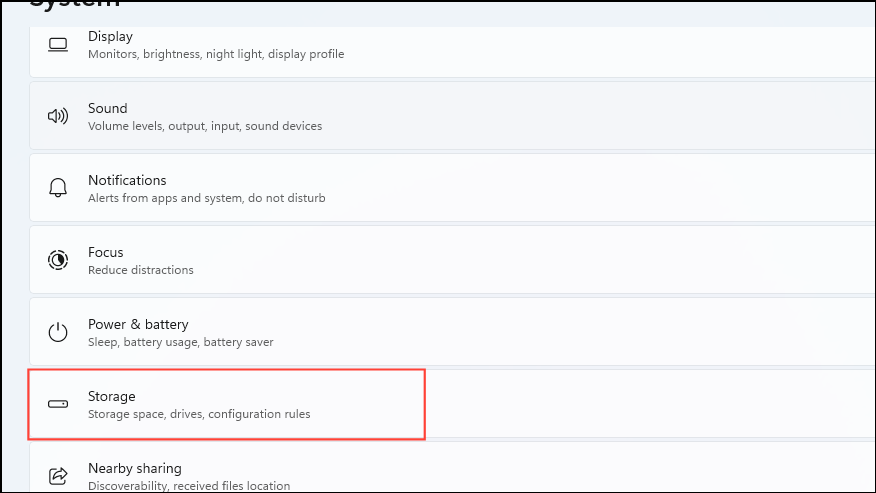
- On the next page, click on 'Advanced storage settings'.
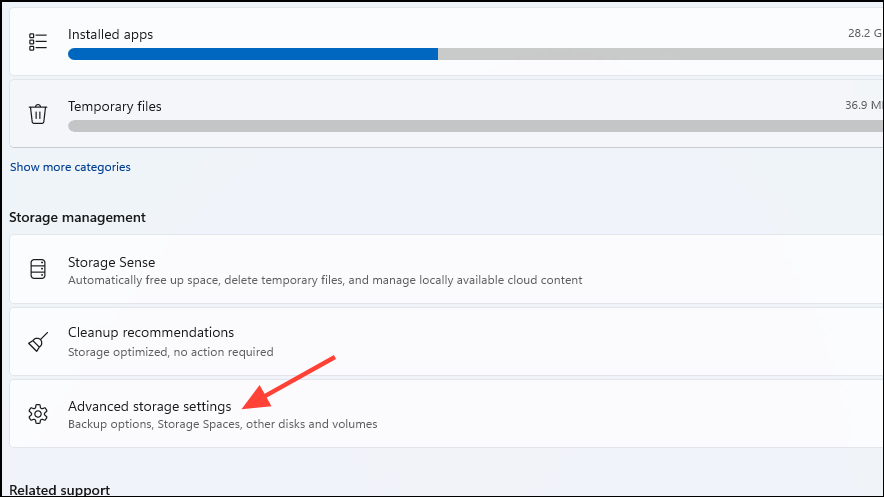
- Then click on 'Disks and volumes' to see all the information related to the various drives on your system.
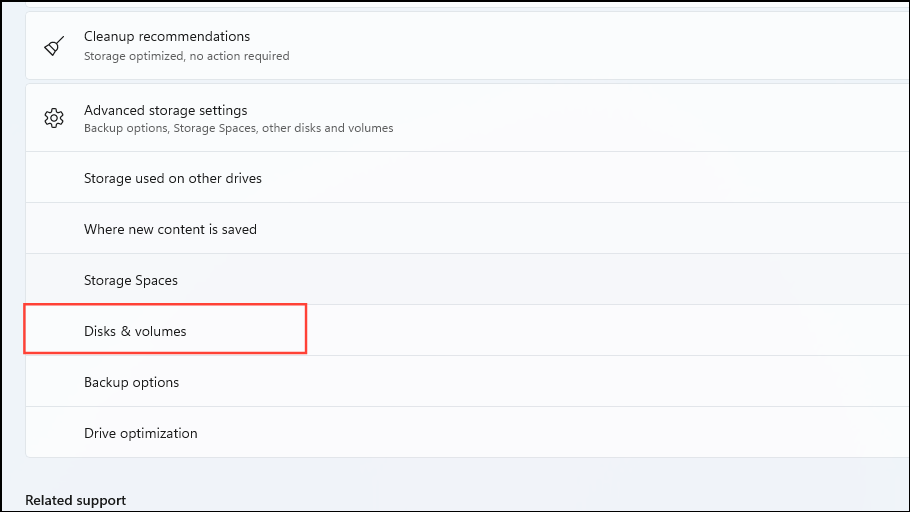
- The next page will list all your drives. Search for your SSD and click on the 'Properties' button on the right.
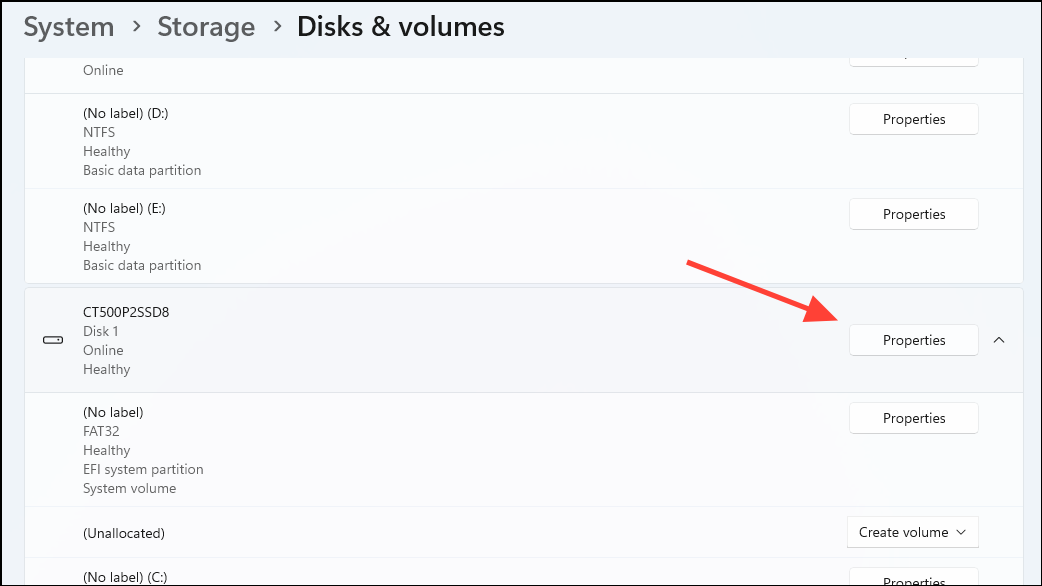
- You will see the SSD temperature below the 'Drive Health' section. However, you can only see the temperature for one drive at a time using this method.
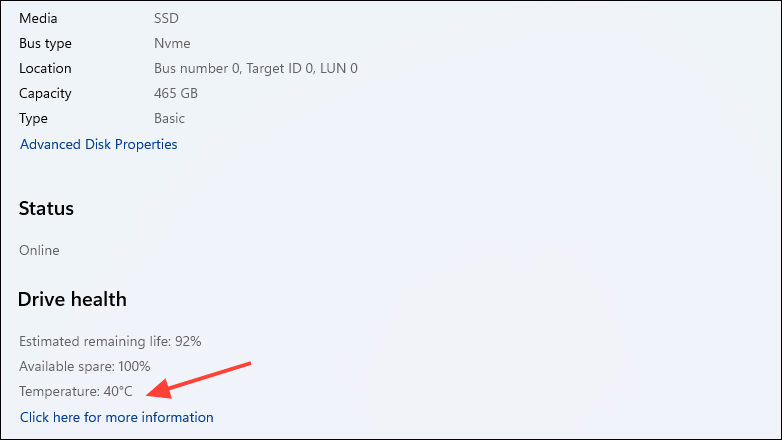
Method 2: With HWMonitor
HWMonitor is a free application that can help you view several important stats of your PC, including the temperature.
- Visit this link, scroll down, and click on the 'Setup' or 'Zip' button to download the .exe or .zip installer, depending on your preferences.
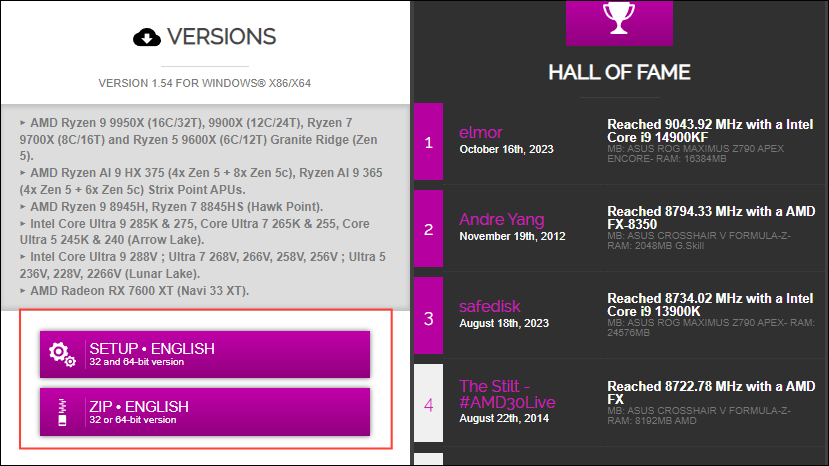
- Once the installer is downloaded, open it and install the program on your computer. Then search for 'HWMonitor' in the Start menu and open it.
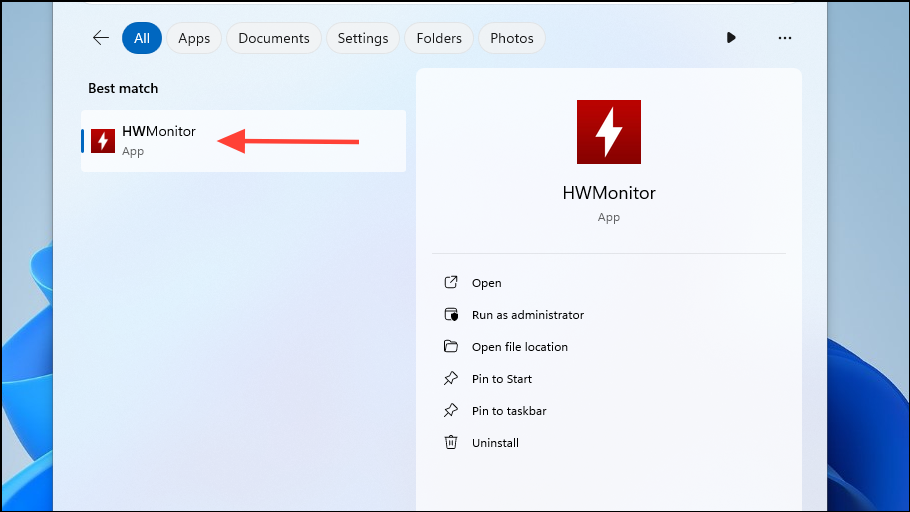
- When the program opens, you will see a lot of information on your screen. The temperature for all your drives will be listed separately, which means you can check the temperature for your SSD easily. Moreover, unlike the previous method, HWINFO lets you view the temperatures for multiple drives at the same time.

Method 3: Using CrystalDisk Info
Another tool you can use to view your SSD temperature is CrystalDiskInfo.
- Download CrystalInfoDisk info from this link and install it on your PC.
- Open the application once it is installed and you will see your SSD temperature on the left below the 'Health Status'.
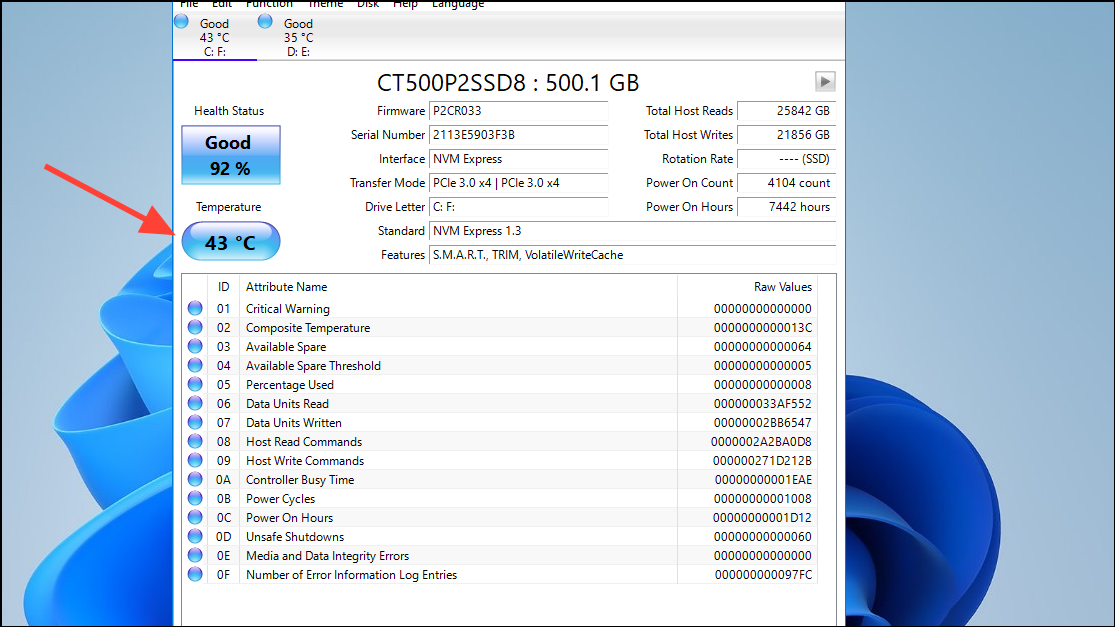
- If you have multiple drives, you can switch between them using the tabs at the top.
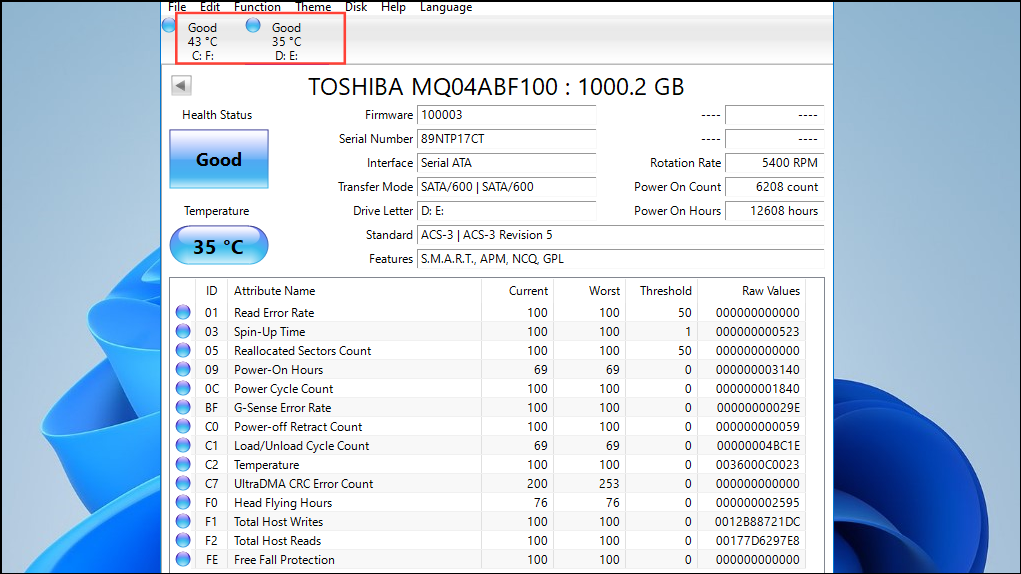
Things to know
- The ideal temperature range for an SSD is between 20 degrees Celsius and 60 degrees Celsius. If the drive is frequently reaching temperatures beyond 60 degrees, there may be a problem with it or your PC.
- If your SSD remains at 70 degrees Celsius or higher for an extended period, it can cause issues like your PC crashing and freezing, and may even result in data loss.
- Your SSD temperature can go up due to several reasons, such as running extremely heavy applications or games for a long period as well as things like improper ventilation and airflow. It does not necessarily mean there is a problem with your SSD, so you should take a look at other factors as well before deciding to replace it.
- In case there is a problem with your SSD, you may see a warning status and you should back up your data as soon as possible and start looking for a replacement drive.


